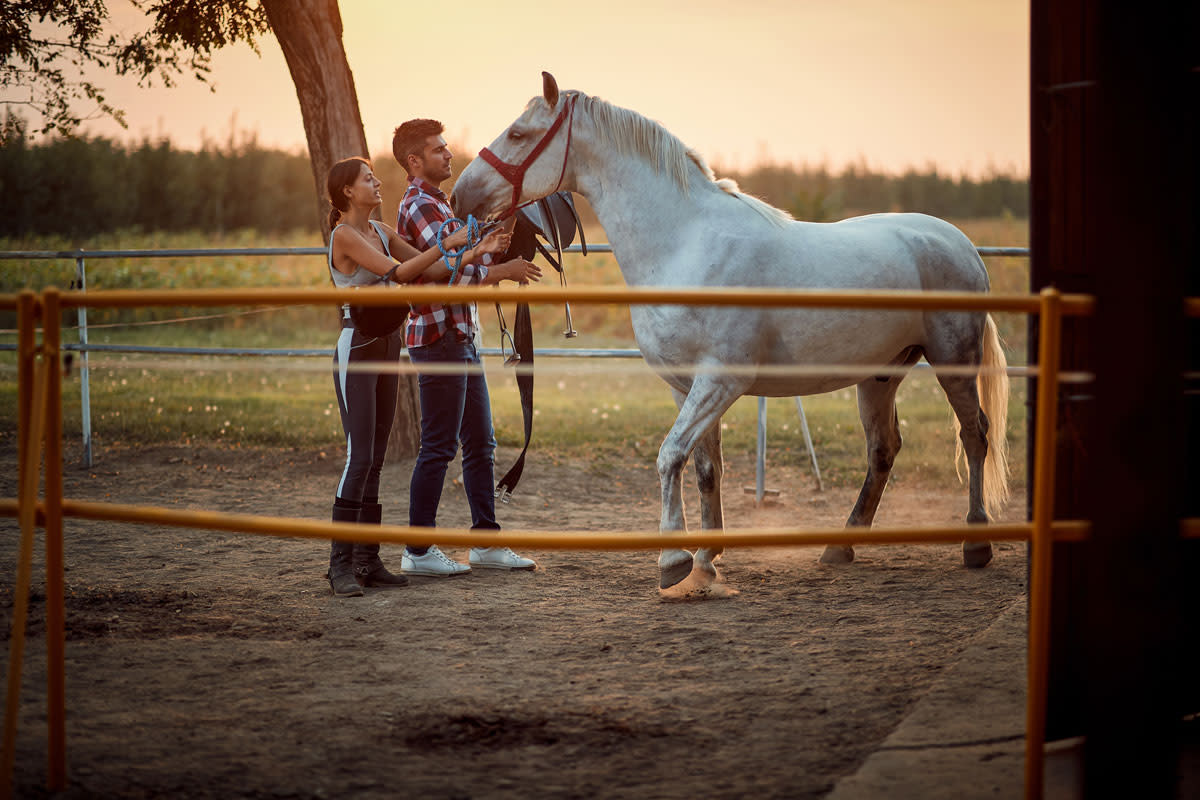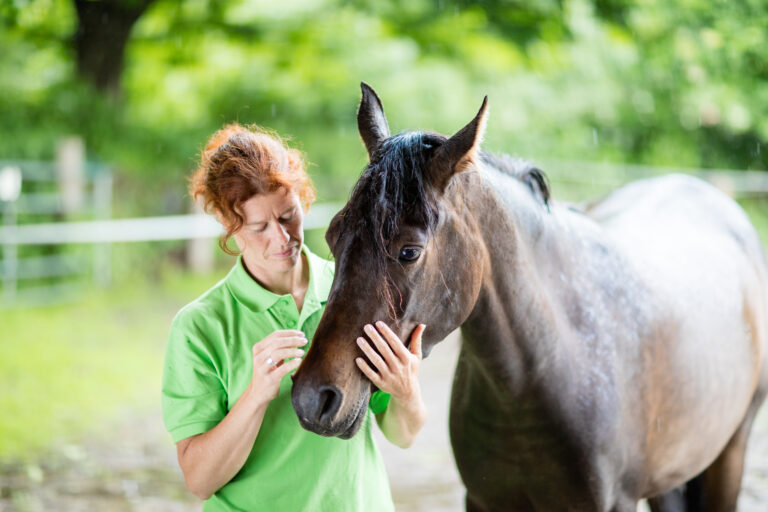
Many owners are unaware that their horses are exhibiting abnormal behaviors during tacking and mounting. There is, however, an association between these abnormal behaviors and underlying pain and/or abnormal saddle fit. Recognizing these abnormal behaviors will permit treatment of the underlying problem and allow you to assist in improving the horse’s overall welfare and solve your client’s issues.
Brought to you by American Regent Animal Health
“Not all horses with underlying pain and/or poor saddle fit develop overtly aggressive behaviors such as biting or kicking during tacking up,” said Sue Dyson, MA, VetMB, PhD, DECVSMR, FRCVS. “Instead, some horses may just be a bit grumpy or have some girth aversion, for example. This grumpy behavior is often assumed to be normal by many horse people. In fact, many riders have become habituated by repeat exposure to abnormal behaviors and now believe it is normal for their horse.”
During her presentation at the 2021 AAEP Annual Convention, Dyson described her observations of 193 horses’ behaviors during different phases of tacking up:
- Approaching the horse with tack;
- Bridling;
- Saddle placement; and
- Girthing.
In addition to assessing the behavior of those horses in person and on video, the owners were administered a “lengthy” questionnaire from Dyson, beginning with the question: “Does your horse show abnormal behavior during tacking up or mounting? Yes or no.”
If the owner replied “yes,” the rider was asked to briefly describe the behaviors. All riders were then asked in-depth questions about the horse’s behavior during each phase of tacking-up and mounting. Examples of abnormal behaviors included:
- Reluctance to open their mouth to receive a bit, yawning, grinding teeth;
- Head up, tilted head, ear back, sclera exposed, mouth open, intense stare/glazed expression when placing a bit; and
- Head up, ears back, intense stare, exposure of sclera when placing the saddle.
Dyson said, “This study showed that only 34% of owners reported that their horse showed behavioral abnormalities during tacking up and mounting. In contrast, experts observed abnormal behaviors in 66% of the horses for ≥25% of the duration of tacking up. The owners do not observe these behaviors, have become habituated to them, or do not recognize the behaviors.”
Upon completion of Dyson’s questionnaire, owners did acknowledge that they recognized some of the abnormal behaviors they didn’t previously.
From a clinical standpoint, Dyson explained that these behaviors can reflect stress or pain, which could be secondary to poor saddle fit as well as lameness. Examples of behaviors include aggression such as biting and kicking; stereotypical behaviors reflecting stress such as head nodding, tossing, nose rubbing or licking; and behaviors reflecting pain, including pinning the ears back, intense staring and tail swishing.
The horses were examined ridden in real-time by an independent assessor to identify any lameness. The video recordings of the 193 horses were then reviewed to apply the ridden horse pain ethogram (RHpE). A combined score was created to reflect the level of discomfort experienced by the horse during ridden exercise.
“In total, 62% of horses were lame,” said Dyson. “The rate of abnormal behaviors during tacking up was 1.4 times higher for horses with moderate/severe lameness than non-lame horses. Further, lame horses had 1.5 times higher rates of abnormal behavior during mounting than non-lame horses.”
There was also an association between abnormal behavior and ill-fitting saddles, especially tight tree points of the saddle.
“Veterinarians therefore cannot rely on a rider’s recall of their horse’s behavior, and abnormal behaviors are likely to reflect a clinically significant condition,” said Dyson. “So, when a veterinarian examines a horse, they should consider evaluating the entire process from tacking all the way through to riding.”
To help guide veterinarians when assessing behaviors during tacking and mounting, Dyson included a comprehensive ethogram in the AAEP Convention Proceedings.
In conclusion, Dyson said, “I believe that client education about the presence and significance of behavior abnormalities during tacking up and mounting is of fundamental importance. I also believe that behavioral assessment is an integral part of the diagnostic armamentarium that we have as veterinarians to optimize equine performance and welfare.”








